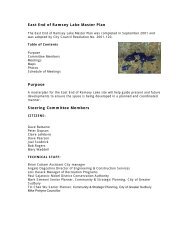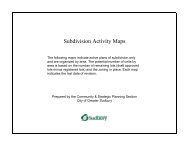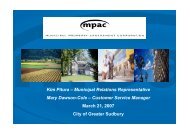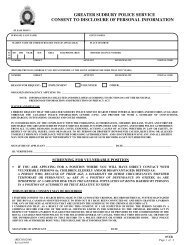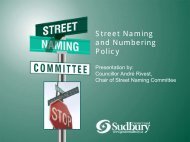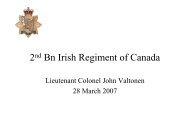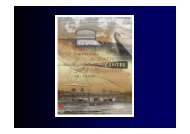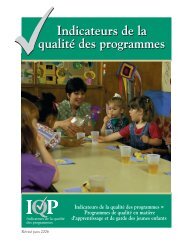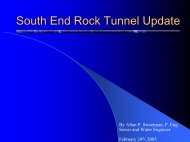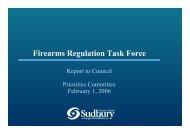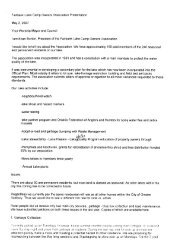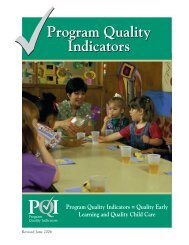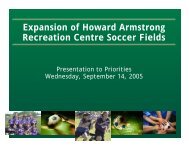City of Greater Sudbury Transportation Study Report
City of Greater Sudbury Transportation Study Report
City of Greater Sudbury Transportation Study Report
You also want an ePaper? Increase the reach of your titles
YUMPU automatically turns print PDFs into web optimized ePapers that Google loves.
4.2. Traffic Zone Development<br />
The Traffic Zone System developed for the 1992 <strong>Transportation</strong> <strong>Study</strong> was reviewed and<br />
used as a starting point for the development <strong>of</strong> a new traffic zone system for use in the travel<br />
demand-forecasting model. Many zones in the former system were split into two or three<br />
additional zones, which resulted in 130 traffic zones, as shown in Figure 4.2.1.<br />
General guidelines that were used to determine if the existing zones should be split are<br />
detailed in the following sections:<br />
1. Conformance With Census Tract Boundaries<br />
It is important to be consistent with Census Tracts so that traffic zones can be aggregated to<br />
Census Tracts. The rationale being:<br />
<br />
<br />
It allows comparisons between the Place-<strong>of</strong>-Residence/ Place-<strong>of</strong>-Work linkages and the<br />
household survey and assists in ensuring that the household survey data has been<br />
properly expanded; and<br />
It allows the use <strong>of</strong> POR-POW data in the development <strong>of</strong> the model.<br />
2. Ability to Model Special <strong>Study</strong> Areas<br />
The traffic zone system developed for the 1992 <strong>Transportation</strong> <strong>Study</strong> did not allow the<br />
modeling <strong>of</strong> special areas that demonstrate unique trip generation characteristics. This is a<br />
feature that the <strong>City</strong> wanted included in this transportation study.<br />
3. To Account for Future Development<br />
The new traffic zone system had to account for future development. Several documents<br />
were reviewed to determine where future development could occur. These included active<br />
subdivision plans, Secondary Plans, etc. In order to reflect the anticipated future<br />
development patterns in Chelmsford, Val Caron, Hanmer and the former <strong>City</strong> <strong>of</strong> <strong>Sudbury</strong>,<br />
traffic zones were split in the transportation model.<br />
4. For Accurate Calibration <strong>of</strong> the Travel Demand Forecasting Model<br />
In some areas, the previous traffic zone system was not detailed enough to properly calibrate<br />
the model and produce reasonable forecasts. This was especially true in the downtown area<br />
and in some <strong>of</strong> the former municipalities. Generally, the level <strong>of</strong> detail for the road network in<br />
the model must be similar to the level <strong>of</strong> detail for the traffic zone system. The traffic zones<br />
in a travel demand-forecasting model are used to load trips onto the road system. Having<br />
too few zones and too many roads or visa-versa will make model calibration difficult and will<br />
produce poor forecasts. To meet the requirements <strong>of</strong> this <strong>Study</strong>, the road network, which<br />
has been developed for the model, is reasonably detailed; however further detailing <strong>of</strong> the<br />
previous traffic zone system was required.<br />
CITY OF GREATER SUDBURY<br />
OFFICIAL PLAN BACKGROUND REPORT<br />
September 2005 Page 39



